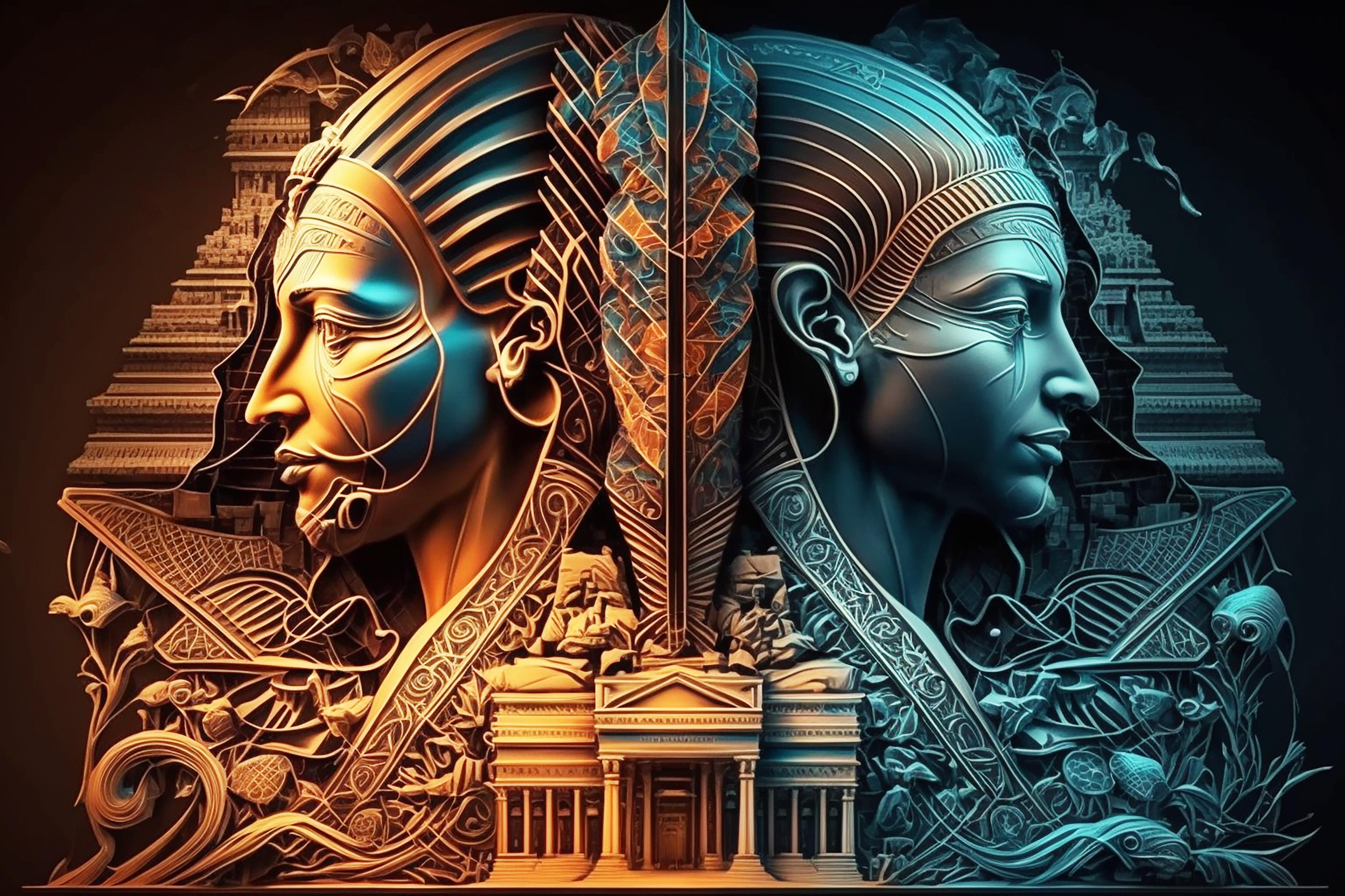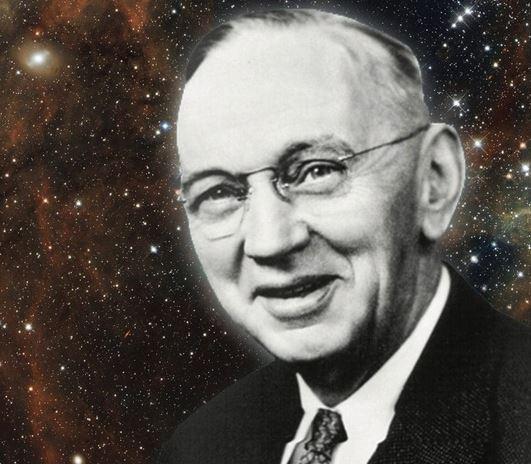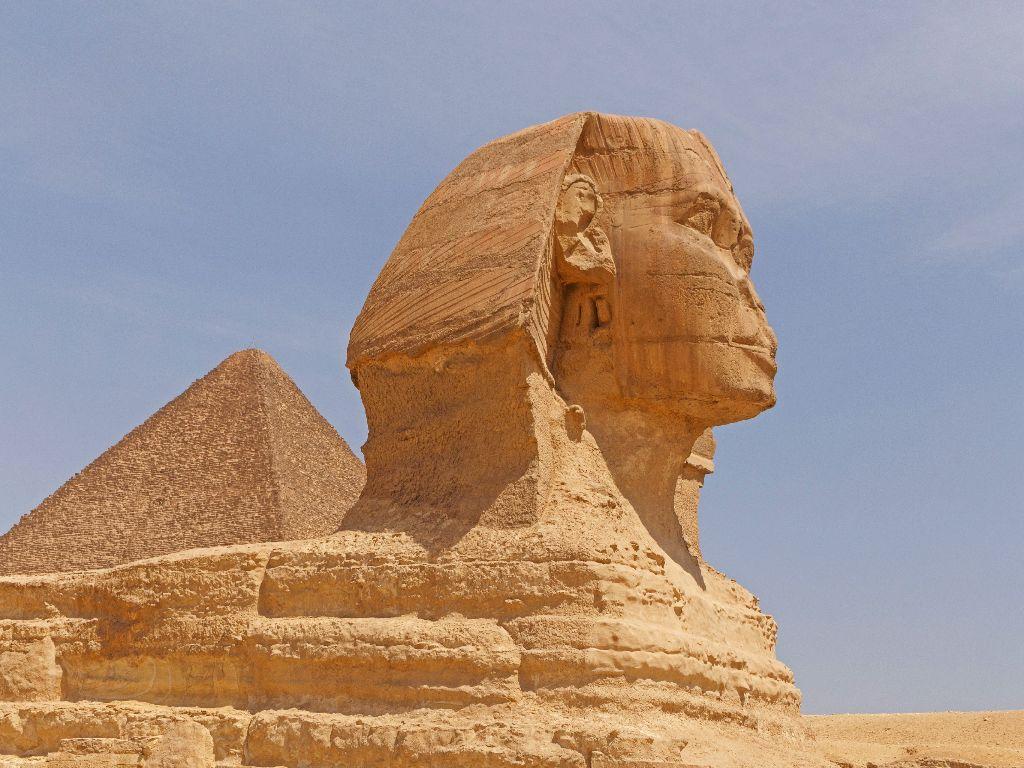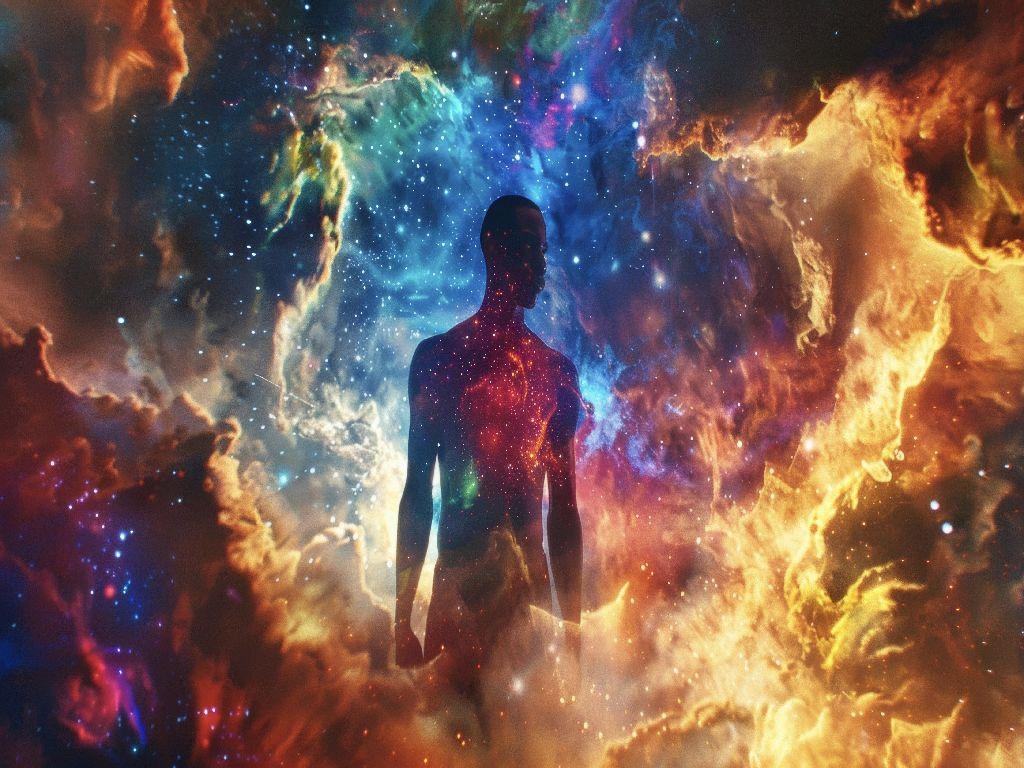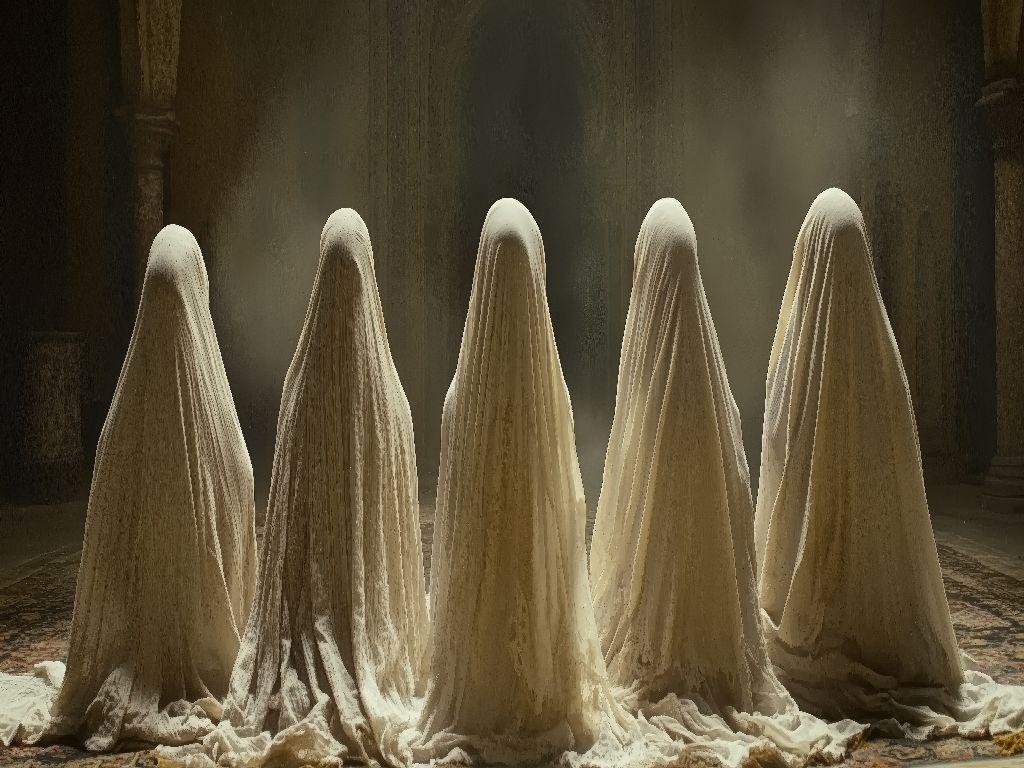Sphinx
🏺 What Is the Sphinx?
The Sphinx is a mythological creature, often depicted with the body of a lion and the head of a human (sometimes a pharaoh or god). The most famous Sphinx is the Great Sphinx of Giza, located in Egypt, but the Sphinx archetype appears in Greek, Persian, and Eastern cultures as well.
🦁 The Great Sphinx of Giza (Egypt)
-
Location: Giza Plateau, Egypt, near the Great Pyramids
-
Dimensions: 240 feet long, 66 feet high
-
Carved from: A single mass of limestone
-
Believed to Represent: Pharaoh Khafre (or Khefren), 4th Dynasty (around 2500 BCE), or possibly the sun god Ra or the god of wisdom, Horus
🏛️ Symbolism of the Great Sphinx
-
Guard of Knowledge: The Sphinx was traditionally believed to guard sacred knowledge or secrets of the cosmos.
-
Solar Symbolism: The lion (associated with the sun) and the human head (associated with intellect and wisdom) represented a balance between spiritual wisdom and royal power.
-
Resurrection: In Egyptian mythology, the Sphinx may have been tied to rebirth, as it faces the rising sun (East).
-
Riddle of Life: The Greek version of the Sphinx (which comes later in myth) is often depicted as giving a riddle, symbolizing the mysteries of existence.
🏺 Sphinx in Greek Mythology
In Greek mythology, the Sphinx takes on a slightly darker role, where she is a malevolent creature.
-
Appearance: The body of a lion, the wings of an eagle, and the face of a woman.
-
Famous Myth: The Sphinx terrorized the city of Thebes, asking travelers a riddle:
"What walks on four legs in the morning, two legs at noon, and three legs in the evening?"
Those who failed to answer were devoured by her. -
Answer: Man — crawling as an infant (4 legs), walking as an adult (2 legs), and using a cane in old age (3 legs).
-
Resolution: Oedipus, the famous Greek hero, solved the riddle, and as a result, the Sphinx threw herself off a cliff.
🧠 Symbolism of the Greek Sphinx
-
Knowledge and Wisdom: The riddle symbolizes the quest for knowledge and self-realization, challenging those who approach the creature.
-
Death and Transformation: The Sphinx in Greek mythology is a transformative force—those who pass the test emerge changed or enlightened.
🐯 Other Cultural Sphinxes
1. Persian Sphinx
In Persian mythology, a similar hybrid creature is known as the "Chimera". It’s a combination of various animals, often including a lion, serpent, and goat. The Persian version emphasizes power and the warrior spirit.
2. Asian Sphinxes
In Hindu and Buddhist cultures, there are lion-headed deities like Narasimha (half-man, half-lion) that embody the balance of human intellect and animal strength, akin to the Sphinx’s symbolic role.
🧘♂️ Symbolism and Spiritual Significance
The Sphinx is much more than a physical or mythological entity—it’s a spiritual archetype representing:
🌟 The Integration of the Divine Feminine and Masculine
-
Lion’s Body: Strength, power, and courage (associated with the feminine energy of nature and the instinctual).
-
Human Face: Wisdom, intellect, and spirituality (associated with the masculine energy of mind and reason).
🔮 Guarding the Gateway to Knowledge
The Sphinx’s role as a guardian of mysteries aligns it with the concept of thresholds—the boundary between known and unknown, physical and spiritual realms. It’s the gatekeeper to higher understanding.
-
In spiritual journeys, the Sphinx symbolizes the need to solve personal riddles or face inner challenges in order to move forward on the path to self-realization or enlightenment.
🦁 The Spiritual Riddle of Life
-
The riddle of the Sphinx is the riddle of human existence: Who are we? Where do we come from? What is our purpose?
-
In this sense, the Sphinx challenges us to awaken to the truth of our own being and understand the cycles of life.
🕵️♂️ Mysteries of the Sphinx (Modern Speculation)
-
The Age of the Sphinx: Some alternative researchers suggest that the Great Sphinx may be much older than the 4th Dynasty, possibly even dating back to 10,000 B.C. This theory is linked to the idea that the Sphinx could have been built by ancient civilizations with far superior knowledge and lost technology.
-
Hidden Secrets: The Sphinx has long been a subject of archaeological speculation. Some believe that there may be hidden chambers beneath the Sphinx or secret knowledge buried nearby, tied to lost ancient wisdom or even Atlantean knowledge.
🏛️ The Sphinx in Esoteric Traditions
-
Gnosticism: The Sphinx has been associated with Gnostic teachings, where it embodies the mysteries of the cosmos—questions that can only be answered through direct mystical experience.
-
Alchemy: In alchemical symbolism, the Sphinx represents the merging of opposites, such as spiritual and material, conscious and unconscious, or masculine and feminine energies. Solving the riddle of the Sphinx is akin to achieving spiritual enlightenment or the Philosopher's Stone.
-
The Tarot: Some Tarot decks use the Sphinx as a symbol of wisdom or a roadblock that one must face to continue their spiritual journey.
🦁 TL;DR: The Sphinx in a Nutshell
-
The Sphinx symbolizes the fusion of power and intellect, the guardian of mysteries, and a challenge to humanity’s quest for knowledge.
-
Egyptian Sphinx: Linked to royalty and divine power.
-
Greek Sphinx: The embodiment of riddles and transformative wisdom.
-
Represents the dual forces of human nature—spiritual and primal—and the need to unveil hidden truths.
-
Holds a prominent place in mystical and esoteric traditions, often seen as a spiritual threshold that must be crossed to access higher wisdom.
🌍 The Hidden History of the Great Sphinx
The Great Sphinx of Giza, with its immense size and enigmatic expression, has fascinated both historians and esoteric seekers for centuries. While mainstream archaeology places its construction around 2500 BCE during the reign of Pharaoh Khafre, there are alternative theories that suggest the Sphinx might be much older.
🕰️ The Sphinx and the Age of Civilization
-
Mainstream View: The Sphinx is generally seen as part of the Giza Plateau, built alongside the pyramids as a symbol of divine protection for the tombs of the pharaohs. It’s a symbol of power, wisdom, and the solar energy of the pharaohs, aligning with the Egyptian concept of kingship and divinity.
-
Alternative Theory: Some alternative historians and pyramid researchers (like Robert Schoch, in his work on the geological age of the Sphinx) propose that the Sphinx might date back to as much as 10,000 BCE. Their argument is based on the erosion patterns of the limestone body of the Sphinx, which show signs of water erosion, something that could only have occurred during a wet, rainy period, which was prevalent in Egypt’s climate millennia before 2500 BCE.
This theory would suggest the Sphinx was built by a much older civilization, possibly pre-dating the dynastic Egyptians, leading to fascinating questions about lost civilizations and the mystery schools that might have existed during this time.
🔮 Sphinx and the Ancient Mystery Schools
Throughout history, the Sphinx has been seen as a portal to wisdom, deeply connected to secret knowledge and initiation rituals. It’s said to have been part of mystery schools that existed in ancient Egypt and even beyond.
🏺 Mystery Schools of Ancient Egypt
The Egyptian mystery schools were centers of spiritual initiation, where knowledge was passed down through a select group of initiates. These schools often involved a series of rituals, teachings, and tests that were meant to awaken the inner divine and unlock a higher level of consciousness.
-
The Sphinx, with its wise and silent gaze, may have acted as a gatekeeper to these deeper teachings.
-
The pharaohs themselves were often seen as living gods and would undergo elaborate initiations at these schools to connect with the divine and understand the mysteries of the universe.
The Sphinx could have symbolized the initiation process, in which the seeker must face and solve the riddle of life in order to pass through and unlock higher knowledge. In this way, it’s not just a physical object but a spiritual metaphor—the “riddle” represents the mystery of existence.
🌙 Connection to the Hermetic Tradition
-
Hermeticism, a philosophical and esoteric tradition dating back to ancient Egypt and Greece, also ties the Sphinx to deep spiritual knowledge. Hermetic teachings focus on the idea of As Above, So Below and seek to understand the underlying laws of the universe. The Sphinx, with its blending of the divine masculine (human face) and primal feminine (lion's body), encapsulates these dualities.
-
The Hermetic principles may be encoded in the symbolism of the Sphinx, which serves as both a guardian and a key to unlocking the mysteries of the universe. In this context, the Sphinx could have been a central figure in the Hermetic mysteries passed down to initiates in ancient Egypt, Greece, and beyond.
🌟 Mystical Interpretations of the Sphinx
🧠 The Sphinx as a Symbol of Enlightenment
In esoteric symbolism, the Sphinx represents the union of opposites—the material and spiritual, the known and unknown, the intellectual and instinctual. It is a teacher and a guide, offering a riddle that must be solved to attain wisdom. This mirrors the spiritual journey—a seeker must confront their inner questions and conquer the riddle of existence in order to reach the next stage of spiritual growth.
-
The Sphinx’s riddle: “What walks on four legs in the morning, two legs at noon, and three legs in the evening?” can be seen as a metaphor for the life cycle—youth, adulthood, and old age—and our journey toward understanding the self. The answer, “Man,” symbolizes the journey from ignorance to enlightenment, from animal instincts to higher spiritual awareness.
-
As a spiritual teacher, the Sphinx teaches us that to evolve, we must face our challenges and expand our consciousness.
🦁 The Sphinx as a Guardian of Hidden Knowledge
The Great Sphinx was traditionally thought to be the protector of sacred knowledge—whether that’s ancient Egyptian wisdom, Atlantean lore, or the mystical truths of the cosmos. Some esoteric traditions believe that the Sphinx guards hidden chambers beneath the ground, possibly containing ancient scrolls or artifacts with powerful spiritual knowledge.
-
Lost Knowledge: Some theorists (like those inspired by Edgar Cayce’s psychic readings) believe that there may be hidden passages or chambers underneath the Sphinx, containing Atlantean wisdom or records of ancient civilizations that predates Egypt’s dynastic period.
-
The Gnostic interpretation suggests that these hidden teachings point to the inner wisdom of the soul. The Sphinx doesn’t just guard external treasures—it’s a symbol of the inner treasures we must seek in order to achieve spiritual ascension.
🔑 The Sphinx and the Path to Self-Realization
In many esoteric traditions, the Sphinx is seen as a symbol of the journey toward enlightenment. Solving the riddle of the Sphinx represents the awakening of the mind and spirit, where the seeker must confront their deepest questions about existence and the nature of reality.
-
To truly understand the riddle, one must transcend duality—the interplay of light and dark, good and evil, life and death—and embrace the idea of oneness with the universe.
-
The Sphinx as a spiritual guardian encourages us to face our personal riddles and overcome our own inner obstacles, leading to a state of inner harmony and balance.
🧳 Where Do We Go From Here?
-
Mystery schools and the Sphinx: Explore how these ancient esoteric teachings are still alive today in spiritual initiation practices. For example, do you think the Mystery Schools of ancient Egypt might have influenced later traditions like Freemasonry, Rosicrucianism, or Theosophy?
-
Atlantean and Egyptian knowledge: Dive deeper into the hidden chambers beneath the Sphinx, or the hidden teachings that may be related to the lost civilizations of Atlantis or Lemuria. There’s a rich connection between these mythic traditions and the Sphinx.
The Sphinx is truly a timeless enigma, a symbol of the mysteries that we as humans are meant to explore and understand throughout our lives.
Links:
Free Reading: Tarot, Astrology and Numerology!


